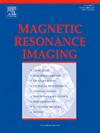JotlasNet: Joint tensor low-rank and attention-based sparse unrolling network for accelerating dynamic MRI
IF 2.1
4区 医学
Q2 RADIOLOGY, NUCLEAR MEDICINE & MEDICAL IMAGING
引用次数: 0
Abstract
Joint low-rank and sparse unrolling networks have shown superior performance in dynamic MRI reconstruction. However, existing works mainly utilized matrix low-rank priors, neglecting the tensor characteristics of dynamic MRI images, and only a global threshold is applied for the sparse constraint to the multi-channel data, limiting the flexibility of the network. Additionally, most of them have inherently complex network structure, with intricate interactions among variables. In this paper, we propose a novel deep unrolling network, JotlasNet, for dynamic MRI reconstruction by jointly utilizing tensor low-rank and attention-based sparse priors. Specifically, we utilize tensor low-rank prior to exploit the structural correlations in high-dimensional data. Convolutional neural networks are used to adaptively learn the low-rank and sparse transform domains. A novel attention-based soft thresholding operator is proposed to assign a unique learnable threshold to each channel of the data in the CNN-learned sparse domain. The network is unrolled from the elaborately designed composite splitting algorithm and thus features a simple yet efficient parallel structure. Extensive experiments on two datasets (OCMR, CMRxRecon) demonstrate the superior performance of JotlasNet in dynamic MRI reconstruction.
JotlasNet:用于加速动态MRI的联合张量低秩和基于注意力的稀疏展开网络。
联合低秩稀疏展开网络在MRI动态重建中表现出优异的性能。然而,现有的工作主要是利用矩阵低秩先验,忽略了动态MRI图像的张量特征,对多通道数据的稀疏约束只采用全局阈值,限制了网络的灵活性。此外,它们大多具有复杂的网络结构,变量之间的相互作用错综复杂。在本文中,我们提出了一种新的深度展开网络,JotlasNet,通过联合使用张量低秩和基于注意力的稀疏先验进行动态MRI重建。具体来说,我们利用张量低秩先验来利用高维数据中的结构相关性。采用卷积神经网络对低秩和稀疏变换域进行自适应学习。提出了一种新的基于注意力的软阈值算子,在cnn学习的稀疏域中为数据的每个通道分配一个唯一的可学习阈值。该网络由精心设计的复合分裂算法展开,具有简单而高效的并行结构。在两个数据集(OCMR, CMRxRecon)上的大量实验证明了JotlasNet在动态MRI重建中的优越性能。
本文章由计算机程序翻译,如有差异,请以英文原文为准。
求助全文
约1分钟内获得全文
求助全文
来源期刊

Magnetic resonance imaging
医学-核医学
CiteScore
4.70
自引率
4.00%
发文量
194
审稿时长
83 days
期刊介绍:
Magnetic Resonance Imaging (MRI) is the first international multidisciplinary journal encompassing physical, life, and clinical science investigations as they relate to the development and use of magnetic resonance imaging. MRI is dedicated to both basic research, technological innovation and applications, providing a single forum for communication among radiologists, physicists, chemists, biochemists, biologists, engineers, internists, pathologists, physiologists, computer scientists, and mathematicians.
 求助内容:
求助内容: 应助结果提醒方式:
应助结果提醒方式:


